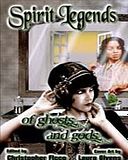The Arab is a small light horse with a high head and high croup. Many Arab Horses have 5 lumbar vertebra and 17 sets of ribs, one less than horses of other breeds.
As a war horse the mares were ridden into battle because of their courage and mental strength. Personally, I always thought that would lead to many interesting battles during the crusades since Western European knights rode stallions.
The Arab started coming to Western Europe during the Crusades, when crusaders came home bringing this ‘new’ horse with them. That was around 1095. After that when the Ottoman Turks pushed into Hungary in 1529 they brought Arabians with them.
From there it went on to influence just about every breed in Europe with the possible exception of the Icelandic, since the stud book there was closed around the year 1000.

Don't ride your horse this way, but even with a bad rider an Arab can do anything
Don't ride your horse this way, but even with a bad rider an Arab can do anything
There are several strains of Arab. Originally there were the Bedouin or Desert bred types
Hamdani: Taller and longer than the Kuhaylan, more refined but still very strong and masculine they are the desert strain with the highest endurance.
Abayyan: even more refined with a high carriage and the high forehead and tapered muzzle that we all think of as the typical Arab. It is more spirited than the Kuhaylan and the Hamdani.
Dahman: a medium sized horse with the refinement of the Abayyan and the strength of the Kuhaylan.
Seglawi: extremely refined, with a much more feminine look. These horses are fast but with less endurance than the other larger bloodlines
Got that?
Well it gets more complex:
Now we have the modern European and Colonial strains
Polish: the Polish strain of Arab is very refined and fast, still they are quite athletic. This strain has been effected by the wars in Europe quite a bit.
Spanish: this strain of horse is known for its disposition,versatility and its big eyes.
Crabbet: the Crabbet type is sturdy and sound and can be used and worked without worry about any kind of breakdown. They can be a bit plain and a bit larger than others.
Russian: the goal of the breeders of this strain is to produce an animals that is pleasant to look at while being extremely athletic.
Egyptian: the Egyptian strain only contains bloodlines of the original desert types. The Egyptian strain is less than 2% of the Arabs registered in the US but hold 30% of the national titles. That says something.  Azzizah an Egyptian Arabian Mare owned by Evening Star Arabians
Azzizah an Egyptian Arabian Mare owned by Evening Star Arabians
Domestic: These animals are the descendants of animals imported before 1944. I would say this is a bit like the population of the US, mostly English (Crabbet) with other strains mixed in.
CMK: this strain is the combination of three studs lines the Crabbet/Maynesboro/Kellogg.
The various breed registries use genetic testing to a much higher extent than I am used to in horses. I’ve seen similar uses of blood testing in rare breed programs but while poking around for info for this blog I saw a lot of information on both genotype and mitochondrial DNA use. The use of mtDNA makes a lot of sense, since this breed is matrilineal.
With the Arab’s strong body, quick mind and great beauty it is one of the best Lady’s horse out there.

These horses bond very tightly with owners and are awesome family horse.  Melanie and Azzizah
Melanie and Azzizah
I needed a lot of help with this post, including Wikipedia, the site for the Arabian Horse Association also the Pyramid Society and Al Khamsa. Last but not least Evening Star Arabians.
 Melanie and Azzizah
Melanie and AzzizahI needed a lot of help with this post, including Wikipedia, the site for the Arabian Horse Association also the Pyramid Society and Al Khamsa. Last but not least Evening Star Arabians.






No comments:
Post a Comment